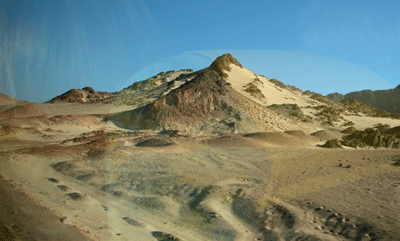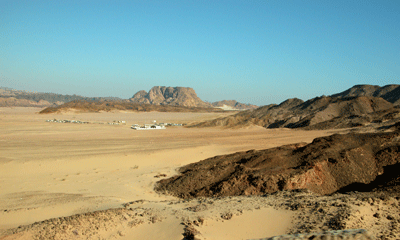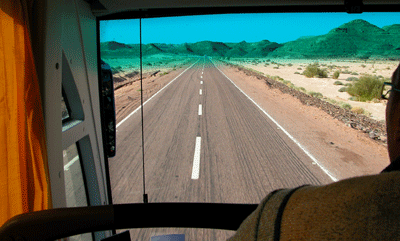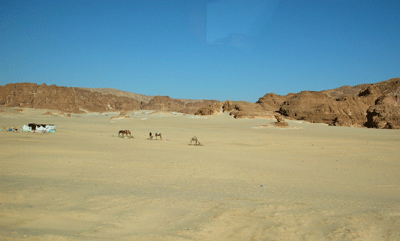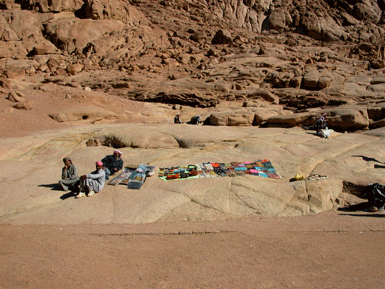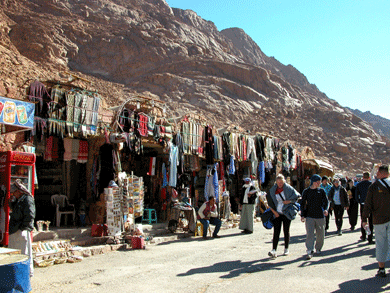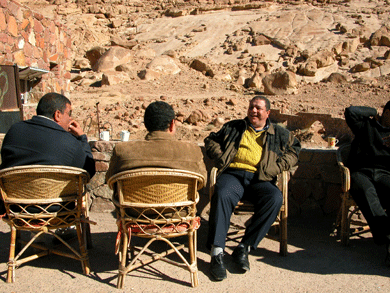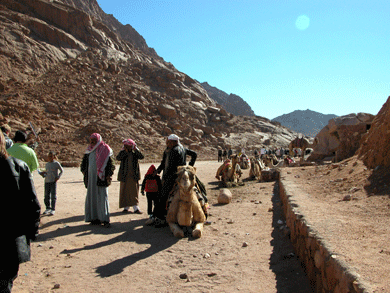|
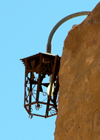 |
Saint
Catherine Monastery
Mount Sinai, Egypt |
 |
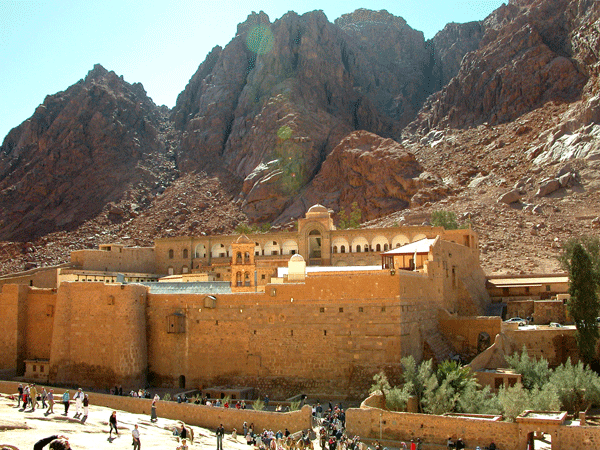
Saint Catherine Monastery
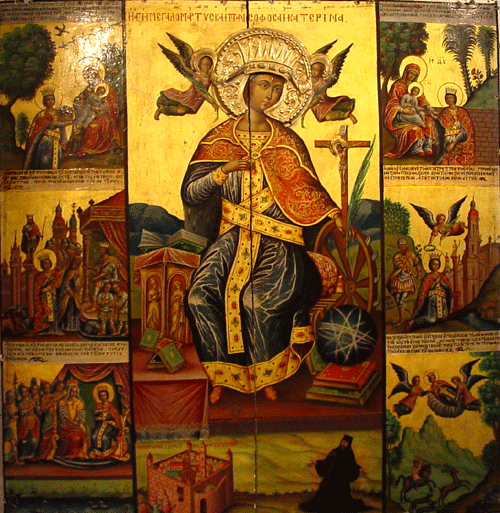
Saint Catherine, Icon from the Icon Gallery
depicting scenes from the life of St. Catherine.
This page contains:
The Monastery of St. Catherine
Sinai
- "A thousand square miles of nothing!"
Mount
Sinai
Photo tour in the
Monastery St. Catherine
The story of St. Catherine
Moses
Monasticism in Sinai
"The
Church of the Transfiguration of the Saviour of Christ"
The Burning Bush
The Icon Gallery
Tourists coming and going ...
Links
|
The
Monastery of St. Catherine |
|

The Monastery of St. Catherine on Mount Sinai built by Justinian (527-565)
as a fortress in the middle of the 6th century.
The Monastery of St. Catherine
is an orthodox monastical center with a continous monastic life since the
6th century. Still today the monastery belongs to the Greek Orthodox Church
and most of the monks who live here are Greek. Here they practise the rules
of the Order of St. Basil the Great (329-379AD), who was boishop of Cesarea.
A women order is living in a Monastery at the Oasis of Feiran, west of Mount
Sinai.
The Monastery and Mount Sinai
are some of the most
important Christian pilgrims sites in the World. According to the legends it
was on this mount that Moses recieved the Ten Commandments and here the
story of the Burning Bush took place. Ever since the site has been highly regarded
as a most holy place and it has been the goal for seekers and pilgrims for several
centuries.
The Monastery is situated in
the heart of the Sinai Desert, and has preserved its special character since
the building in 6th century. The Monastery is build as a fortress in the
times of great upheaval and unrest. But never in its long history has it
been conqured, damaged or destroyed, maybe due to its desolated situation in the Sinai desert. But
also because Arab caliphs, Turkish sulans, Mohammed, the founder of Islam, and Napoleon all took the Monastery under their protection. The original
proclamation of Napoleon is still kept in the Icon Gallery of the Monastery
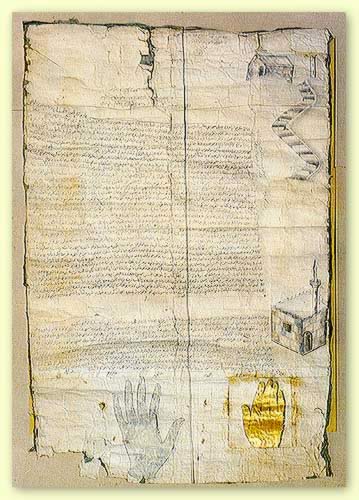
The protection proclamation of Mohammed |
|
The Sinai
Desert
- "A thousand square miles of nothing!" |
|
At first glimpse Sinai seems
to be a boundless mooon landscape, arid and barren in its immense mountains,
in its parched "ouadi", in its stony streches that have never known either
mans labour or the presence of animals.
The name "Sinai" can perhaps
be connected to Sin, the goddess of the moon, who was adored by the ancient
inhabitants of the desert, or maybe to the Semitic word "sen" which means
tooth - the form of the peninsula of Sinai, streching between the Gulf of
Suez and the Gulf of Aqaba, the northern part of the Red Sea.
The El Tel Region of the
central Sinai is a broard plateau of limestone. |
|
Mount
Sinai |
|
Further south into the triangular tip of the
peninsula, the visitor finds a moonscape of granite mountains, with the peaks and high
ridges of Mount Moses - in the Bible called, Horeb or Sinai -, Mount
Catherine, Mount Serbal and Umm Shumar, where the children of Israel
wandered 33 centuries ago.
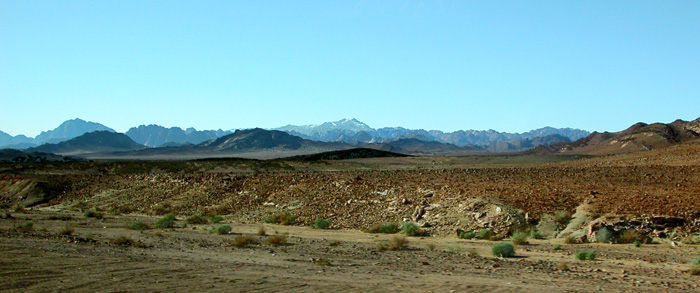
Mount Sinai, the best and only wiev from the
roads,
this road going East/West from Dahab at the Gulf of Aqaba
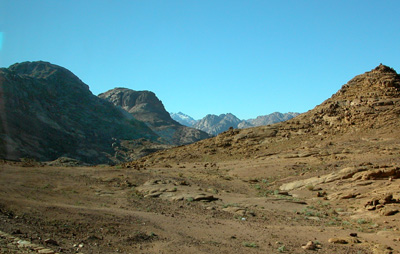
Mount Sinai dissapearing behind other rocks,
no more to be
seen again before arriving at the Monastery of St. Catherine
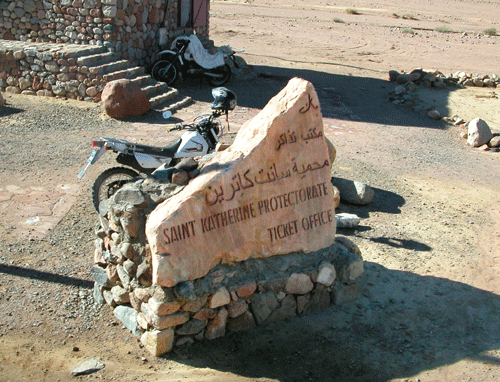
Getting into the St. Catherine Protectorate

Ticket Office |
|
Photo
tour in the
Monastery St. Catherine |
|

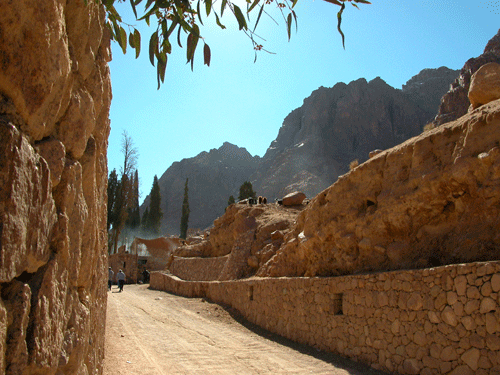
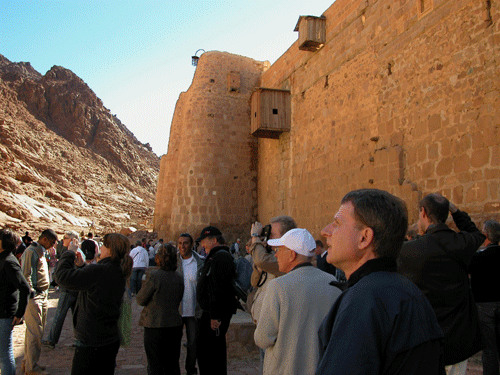
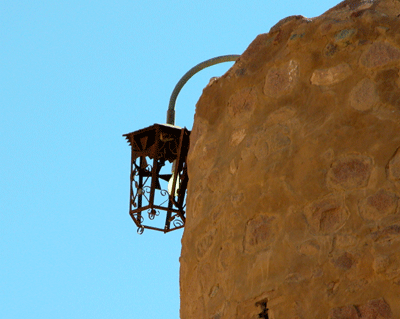
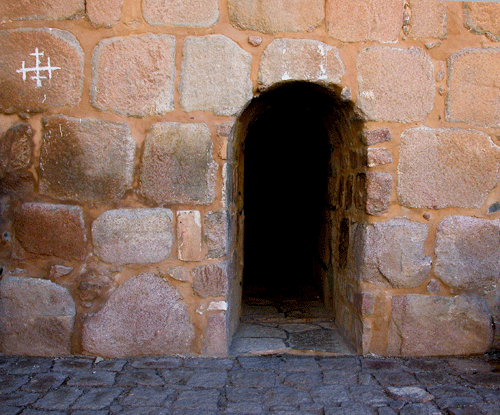
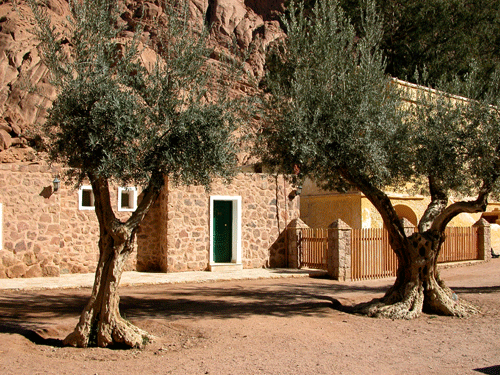
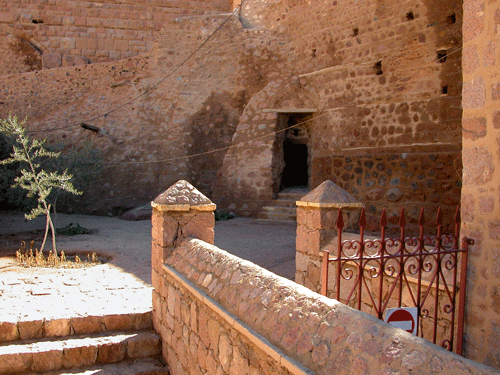
|
|
The
story of Saint
Catherine |
|
St. Catherine was born in
Alexandria in 295. Her birth name was Dorothea. According to the records of
her life, she was educated in a pagan school where she learned philosophy,
rhetoric, poetry, music, physics, mathematics, astronomy and medicine. As
the beautiful daughter of an aristocratic pagan family, she did not lack for
suitors, but she rejected them. A Syrian monk taught her about Jesus Christ,
th bridegroom of the soul, and converted har to Christianity. She was
baptized as Catherine.
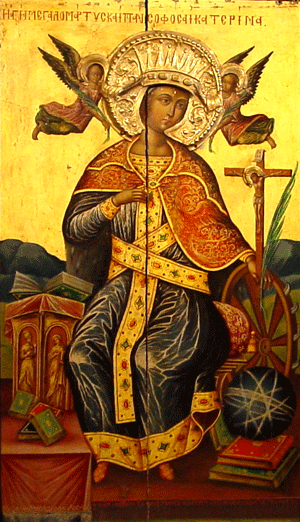
During the persecution of Christians in the
reign of the Roman Emperor Maximinus in the early 4th century, she confessed
her faith in Jesus Christ and publicly accused the emperor of sacrificing to
idols. Fifty wise men brought from all over the Empire tried in vain to
dissuade her. But she, on the contrary, persuaded them, by quotations and
sayings of the ancient Greek philosophy, to believe in Jesus. Under torture
she succeded in converting members of the Emperor's family and members of
the Roman aristocracy to Christianity.
After Catherine's execution her body vanished.
According to tradition, angels transproted it to the peak of the highest
mountain in Sinai, which now bear hers name.
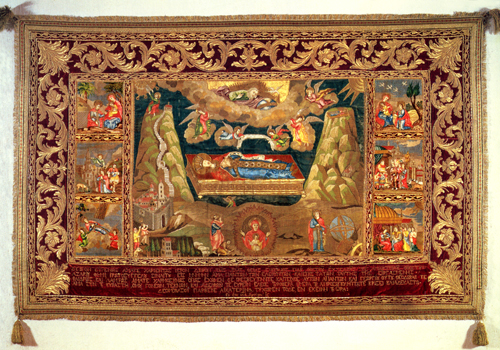
18th century silk embrodery depicting the life
of Sct.Catherine
and her transportation to Mount Sinai by angles.
About three centuries later (7th century),
monks of the Monastery already erected by Justinian, found her body guided
by a dream, brought it down from the mountain and placed it in a golden
casket in the Church. The sweet fragrance of her sacred remains is even
today a continous miracle.

Rare icon from the Icon Gallery
depicting six scenes from the life of Sct. Catherine.
In the center: Saint Catherine
Top left and right: She is looking at Jesus as infant on the lap of Virgin
Mary.
Center left: She is speeking to the Emperor.
Below left: Teaching the Empress.
Center right: The beheading of St. Catherine.
Below right: Her body is transported by angels to the peak of Mount
Catherine.
The story of St. Catherine's martyrdom was
carried to the West by the Crusaders, and she became accepted in Europe as a
major saint. So since the 11th century the Monastery of the Transfiguration
has also been known as the Monastery of St. Catherine. |
|
Moses |
|
At the age of forty, Moses escaped from
Egypt to Mount Horeb (Mount Sinai) and here he found Jethro's seven
daughters watering a flock at the well, which is still to be seen today on
the north side of the Monastery's Church. After marrying one of Jethro's daughters,
Moses lived for forty years with his father-in-law, tending the flocks and
cleansing his soul in the silence and solitude of the Sinai Desert. Here God
revealed Himself to Moses in the miracle of the Burning Bush and ordered him
to return to Egypt, and bring the children of Israel to Mount Horeb in order
to serve Him.
The Children of Israel crossed Sinai in the
13th century Before Christ on their way from bondage in Egypt to the
Promised Land of Canaan. Although their exact route is subject of
controversy among scholars, the traditional route leads across the Red Sea
(Exodus 14:21-22) to Elim (probably the present El-Tur with its 12 wells and
70 date palms (Exodus 15:27)), and Wadi Hebran (taking its name from the
Hebrews' crossing of the Wilderness of Sin) into Egypt, they reached the
sacred Mount Horeb where they recieved God's Law - Teh Ten Commandments -
the foundation on which they were called to build their religious and social
organization.
Six hundred years later, another great
profet of Israel, Elijah, came to this area, seeking refuge from the rage of
Queen Jezebel. A cave in a chapel on Mount Moses dedicated to the Prophet is
the traditional site where he lodged and spoke with God (1 Kings 19:9-15) |
|
Monasticism in Sinai
|
|
The yearning to be near God and far from the
persecutions of pagan Rome brought many early Christians to Sinai in search
of tranquility, silence, isolation and holiness. From the 3rd century AD and
onwards, monks settled in small monastic communities near sacred places
around Mount Horeb, such as the site of the Burning Bush, the Firan Oasis
and other places in southern Sinai. The exact location of these holy places
has been preserved in the memory of the native population through the
centuries.
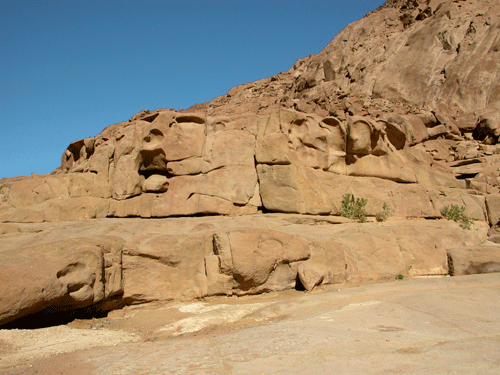
The first monks suffered constant
privations. Nature was unkind to man, and many fell prey to marauding
nomads. The first monks were hermits who lived alone in caves, praying alone
in utter poverty. They were self-sufficient, except on holy days when they
gathered near the site of the Burning Bush in order to listen to their
spiritual leaders and to recieve the Holy Communion.
Because of their holy lives, the Christian
hermits of Sinai were natural missionaries among the pagan tribes of Sinai.
By the time og the Arab conquest in the 7th century, most of Sinai's
inhabitants were Christian.
In year 313 AD Constantine the Great
bestowed the status of a recognized religion on Christianity and granted
freedom of worship throughout the Roman Empire. He and most of the Byzantine
rulers were inclined to favour the monastic orders that sprang up in the
Land of the Bible. And in this atmosphere of religious freedom, removed from
earlier persecutions, monasticism took a new lease of life.
The monks of Sinai petitioned St.
Constantine's mother, the Empress Helena, for her patronage. In 330 AD, St.
Helena erected a small church dedicated to the Mother of God (Mary), and a
tower at the site of the Burning Bush to serve as a secure shelter for the
monks. Pilgrims of the late 4th century relate that there was an important
and flourishing community of monks in Sinai. Famous among them was a former
high officer of the Emperor in Constantinople, St. Nile, whose writings are
studied today by priests, monks and believers.
|
|
"The
Church of the Transfiguration of the Saviour of Christ" |
From:
The Transfiguration of Jesus is an event reported in the
New Testament in which
Jesus
is
transfigured and becomes radiant upon a mountain. The
Synoptic Gospels (Matthew
17:1-9,
Mark 9:2-8,
Luke 9:28-36) describe it, and
2 Peter 1:16-18 refers to it.
In these accounts Jesus and three of his apostles go to a
mountain (the
Mount of Transfiguration). On the mountain, Jesus begins to
shine with bright rays of light, the prophets
Moses
and
Elijah appear next to him and he speaks with them. Jesus is then
called "Son"
by a voice in the sky, assumed to be
God the Father, as in the
Baptism of Jesus.[1]
The Transfiguration is one of the
miracles of Jesus in the Gospels.[2][3][4]
This miracle is unique among others that appear in the
Canonical gospels, in that the miracle happens to Jesus himself.[5]
Thomas Aquinas considered the Transfiguration "the greatest
miracle" in that it complemented baptism and showed the
perfection of life in
Heaven.[6]
In Christian teachings, the Transfiguration is a pivotal moment,
and the setting on the mountain is presented as the point where
human nature meets God: the meeting place for the temporal and the
eternal, with Jesus himself as the connecting point, acting as the
bridge between heaven and earth.[7]
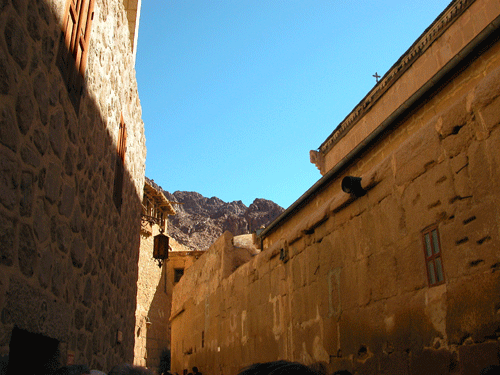
Wiev along the church wall towards South from
the well of Moses

Wiev
towards North, the Minaret, Mosque and Archbishop's New Dwellings
|
|
The Burning Bush |
"It was furthermore nessesary to go out at
the head of the valley, because there were many cells of hermits, and a
church, where the bush is. This bush is alive to the present day and sends
forth shoots. This is the bush I spoke of about, out of which God spoke to
Moses in the fire. Where the bush stands in front of the church there is a
very pleasant garden."
Description given by a women pilgrim from Spain named Etheria, who visited
this place about the end of the 4th century.
Until today the site of the Burning Bush retains the main features of this
description.

The Burning Bush today
The Chapel of the Burning Bush is now
behind the Altar of the Transfiguration Church. The pligrims enters this
holiest place of the Monastery without shoes, in remembrance of the
commandment of God to Moses: "Put off thy shoes from off thy feet, for the
place whereon thou standest is holy ground." (Ex. 3:5).

Moses recieving "the Law"
with his feet on the Burning Bush
The chapel is dedicatedto the Annunciation
of the Virgin Mary, and this is also the meaning of some special icons which
are to bee seen here. They show the Mother of God holding Jesus Christ and
sitting in the middle of the Burning Bush.
The holy altar of the chapel stands not
upon the sacred remains of martyrs, which is the rule, but above the roots
of the Burning Bush. In the apse is the mosaic of a cross dating to the 10th
century. The holy Liturgy is performed in the chapel every Saturday.
The bush flourishes several yards farther
from the chapel where it was transplanted in order to build the holy altar
upon its roots. It is the only bush of its kind growing in the entire Sinai
Peninsula, and every attempt to transplant a branch of it to another place
has been unsuccessful.
Further debate on:
http://en.wikipedia.org/wiki/Burning_bushChristian
hermits
originally gathered at
Mount Serbal, believing it to be the
biblical Mount Sinai. However, in the 4th century, under the
Byzantine Empire, the monastery built there was abandoned in
favour of the newer belief that
Mount Saint Catherine was the Biblical Mount Sinai; a new
monastery - St. Catherine's Monastery was built at its foot, and the
alleged site of the biblical burning bush was identified. The
bush growing at the spot (a
bramble,
scientific name Rubus sanctus[21]),
was later transplanted several yards away to a courtyard of the
monastery, and its original spot was covered by a chapel dedicated
to the
Annunciation, with a silver star marking where the roots of the
bush had come out of the ground. The Monks at St. Catherine's
Monastery, following
church tradition, believe that this bush is, in fact, the
original bush seen by Moses, rather than a later replacement[citation
needed], and anyone entering the chapel is required to
remove their shoes, just as Moses was in the biblical account.
However, in modern times, it is not Mount Saint Catherine, but
the adjacent
Jebel Musa (Mount Moses), which is currently identified
as Mount Sinai by popular tradition and guide books; this
identification arose from
bedouin tradition.
Mount Serbal, Jebel Musa, and Mount Saint Catherine, all lie at
the southern tip of the
Sinai peninsula, but the peninsula's name is a comparatively
modern invention, and it was not known by that name at the time of
Josephus or earlier. Most modern scholars, as well as many
modern theologians, dismiss the idea that the biblical Sinai was at
the south of the peninsula, instead favouring locations in the
Hijaz (at the north west of
Saudi Arabia), northern
Arabah
(in the vicinity of
Petra,
or the surrounding area), or occasionally in the central or northern
Sinai Peninsula. Hence, the majority of academics and theologians
agree that if the burning bush ever existed, then it is
highly unlikely to be the bush preserved at St Catherine's
Monastery.
|
|
The Icon
Gallery |
|
The Gallery exhibit 150 out of a collection of
2.000 priceless icons of immense spiritual, artistic and historic value.
Twelve of the rarest and oldest icons of the 6th century were made in the
wax-melting technique. Part of the collection belongs to the early Byzantine
period (6th-10th century), and the Hellenistic, Georgian, Syrian and Copthic
styles. A large collection dates back to the 11th-15th century. Western
icons are rare, among them is the Spanish icon of Sct. Catherine from
Alexandria in Gothic style, dating beck to 1387, which is to be seen in the
church.
Sct.
Catherine

Rare Spanish icon
depicting six scenes from the life of Sct. Catherine of Alexandria.
In the center: Saint Catherine
Top left and right: She is looking at Jesus as infant on the lap of Virgin
Mary.
Center left: She is speeking to the Emperor.
Below left: Teaching the Empress.
Center right: The beheading of St. Catherine.
Below right: Her body is transported by angels to the peak of Mount
Catherine.
Jesus
Pantocrator – Ruler of the World
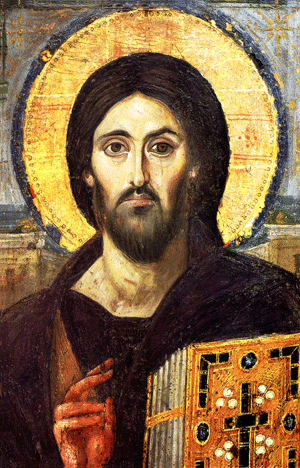
A very rare and world
famous wax icon in Byzantine style from 7th century
From The Icon Gallery in Sct. Catherine Monastery, Mount Sinai, Egypt.
18x34½”
The two different facial expressions on
either side emphasize
Christ's dual nature as fully God and fully human
Jesus is seen on the left
side represented as the savior blessing humanity.
On the right side Jesus holds a volume of The New Testament
representing a more worldly function, and seen crying for humanity.
http://en.wikipedia.org/wiki/Christ_Pantocrator
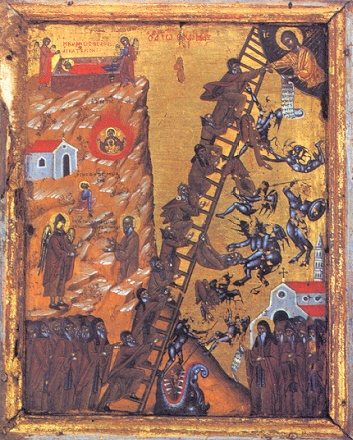
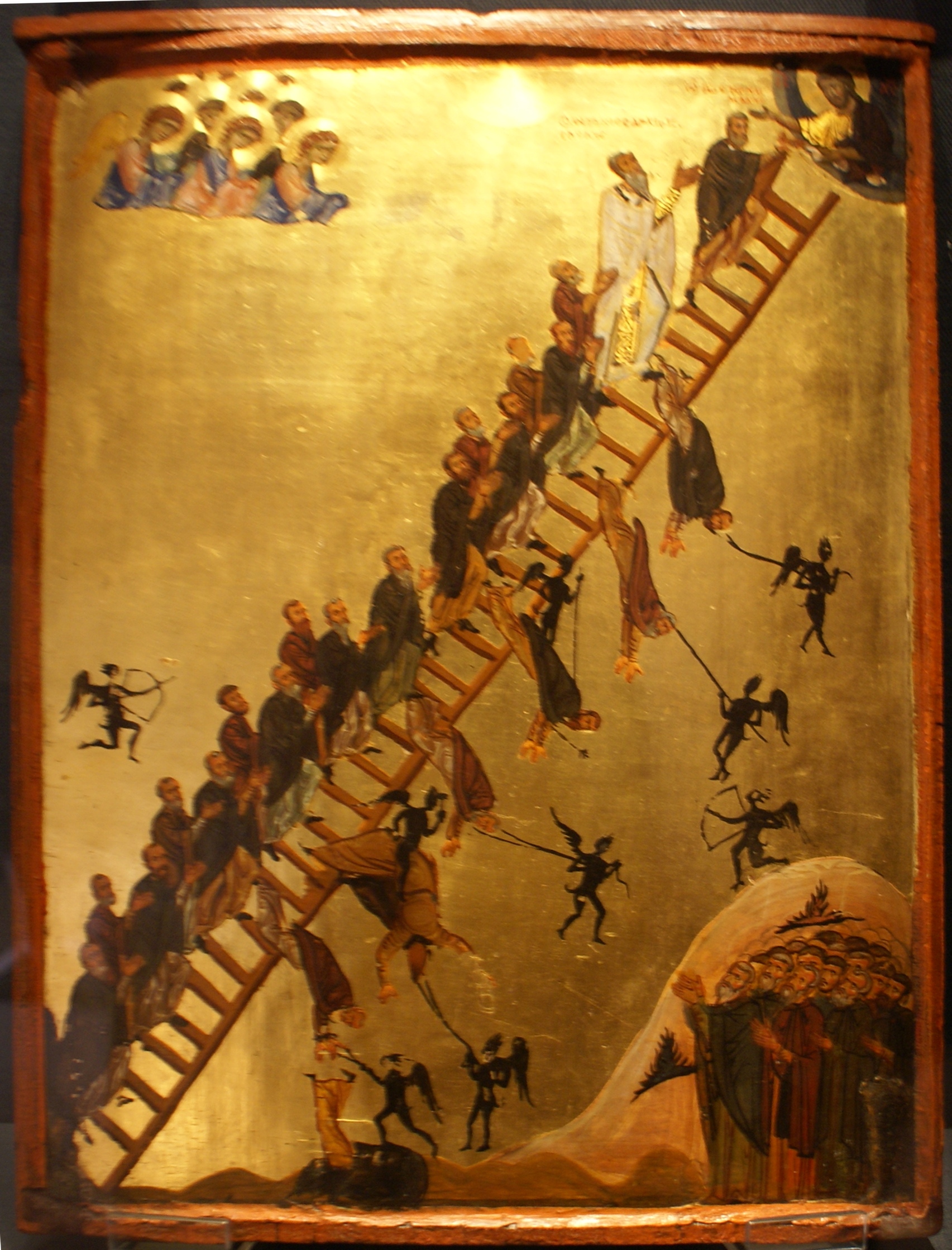
Two versions of "The Ladder of Divine Descent"
http://en.wikipedia.org/wiki/Ladder_of_Divine_Ascent
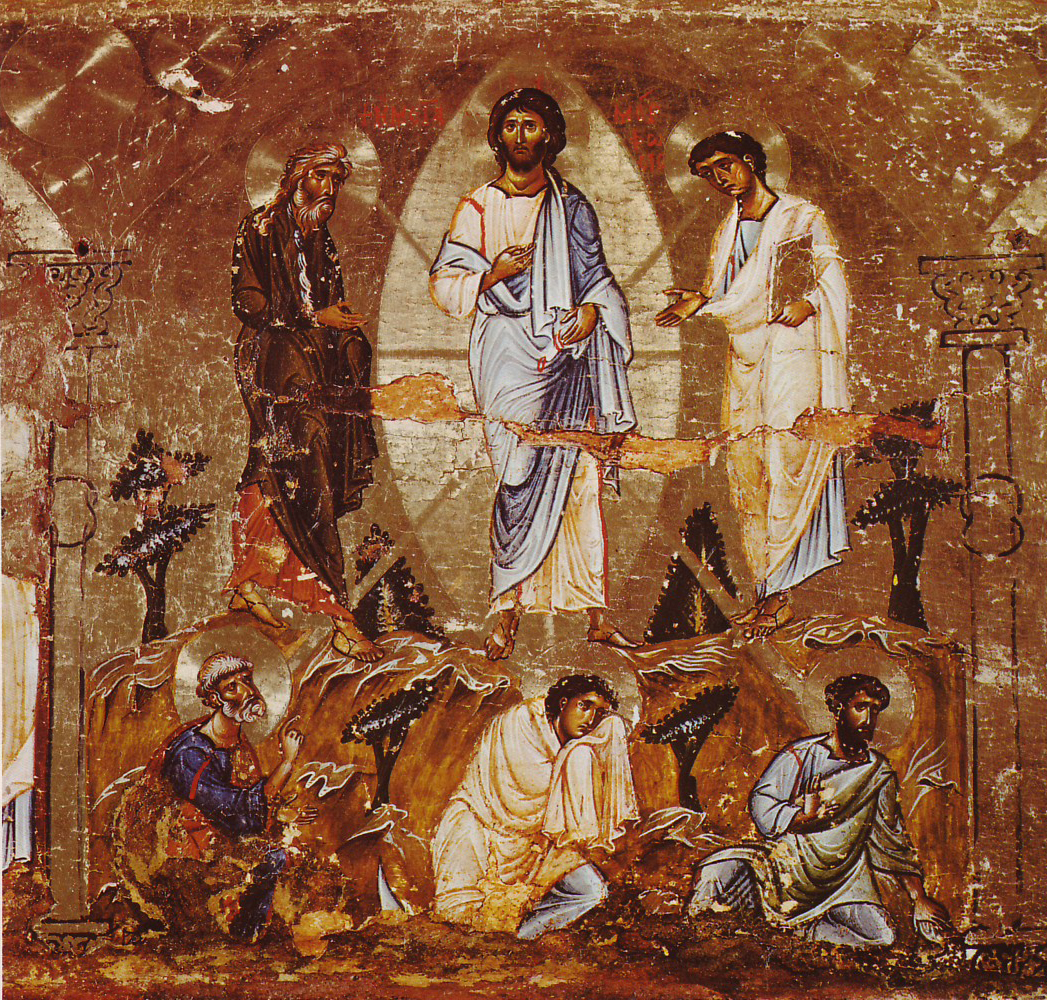
"The Transfiguration of Christ" - 12th century
See more icons from Sct.
Catherine Monastery:
http://en.wikipedia.org/wiki/St._Catherine%27s_Monastery |
|
Tourists coming and going ... |
|
As mentioned the Monastery of St. Caterine and
Mount Sinai are some of the most important Christian pilgrims sites in the
World. Thousands of tourists of every nation, faith etc. visit this area
every day. Expect to be one of many.
The best thing a visitor can do, is to read
about the site beforehand. Choose what is most important for you to see and
go there on your own. You will probably loose sight of your guide anyway. As
the tours normally are one-day tours from the tourist centers and you only
have 1½ - 2 hours at this wast place, it is quite impossible to see
everything. It is not possible to go outside the monastery area and up in
the mountains.
|

Lamp of Sct. Catherine leading the
seeker
to St. Catherine Monestary in
the dark
|




